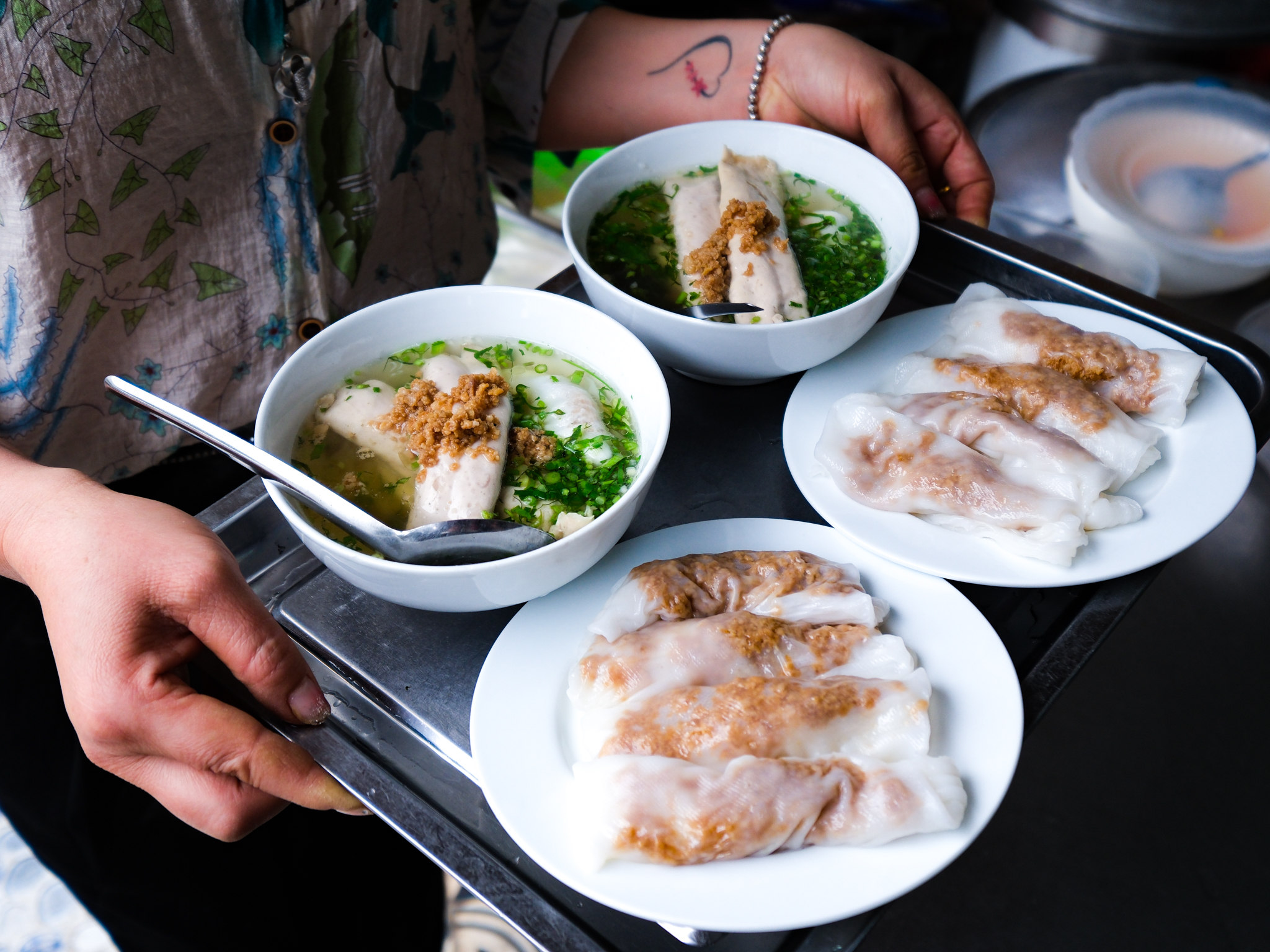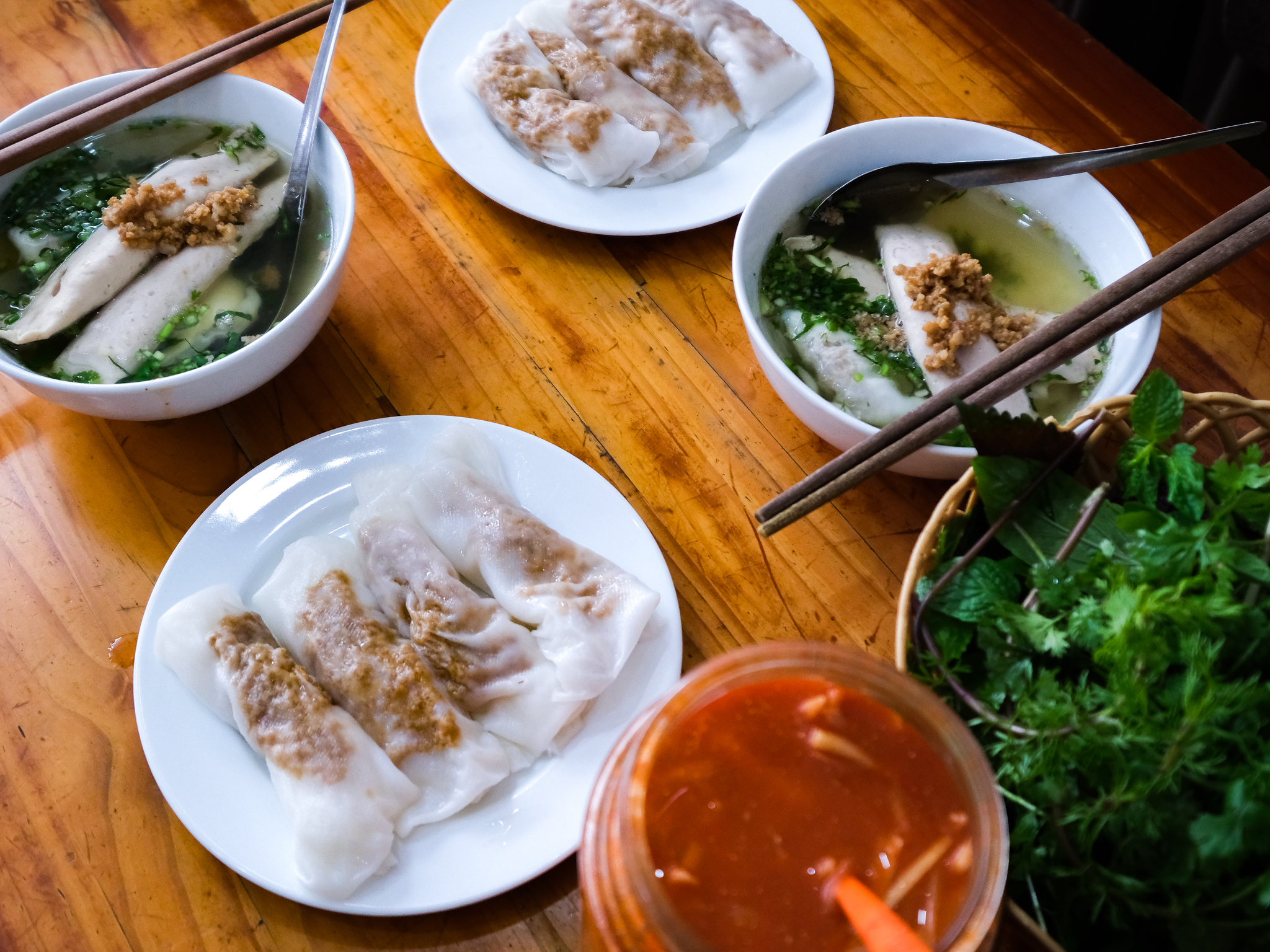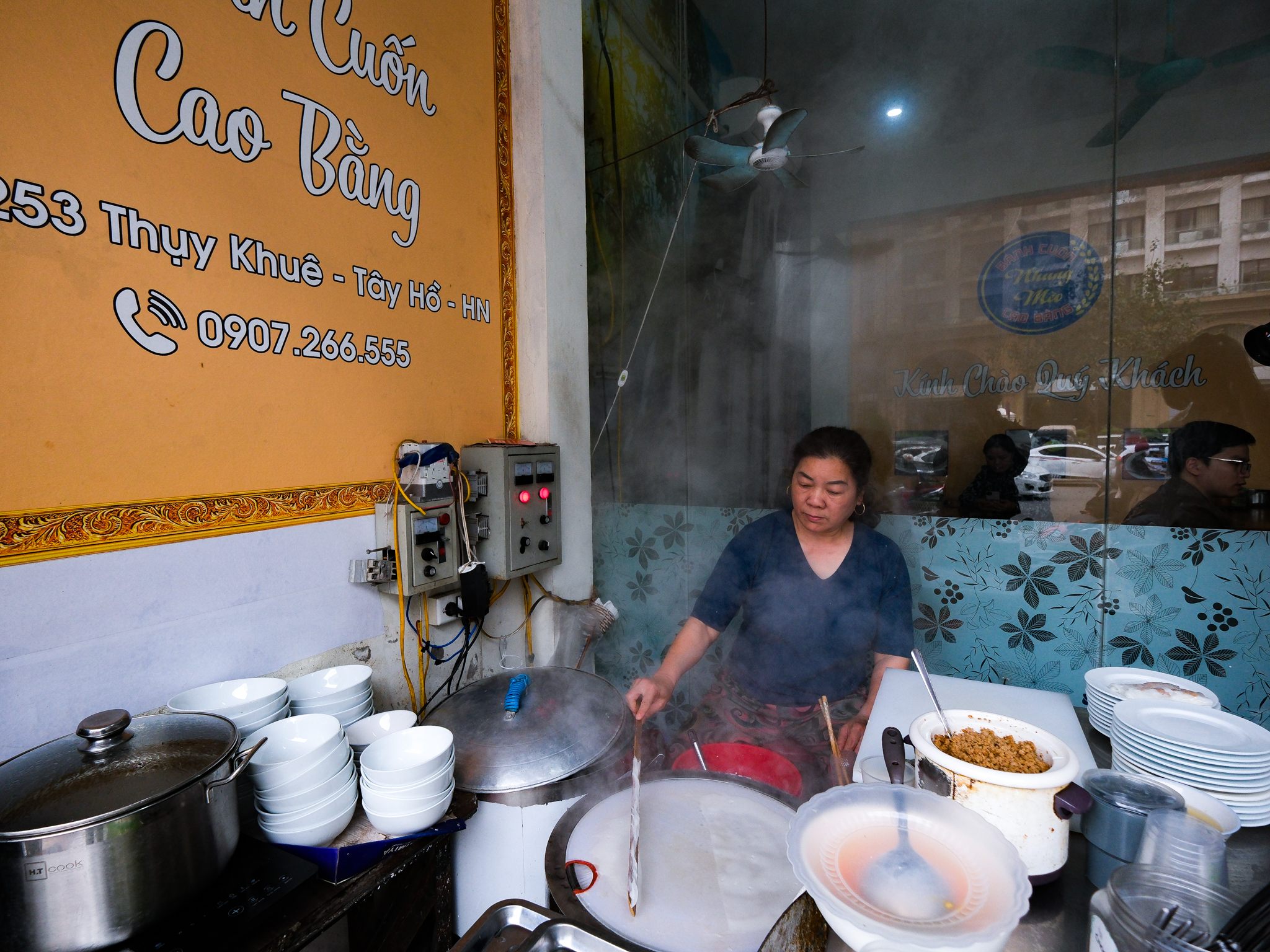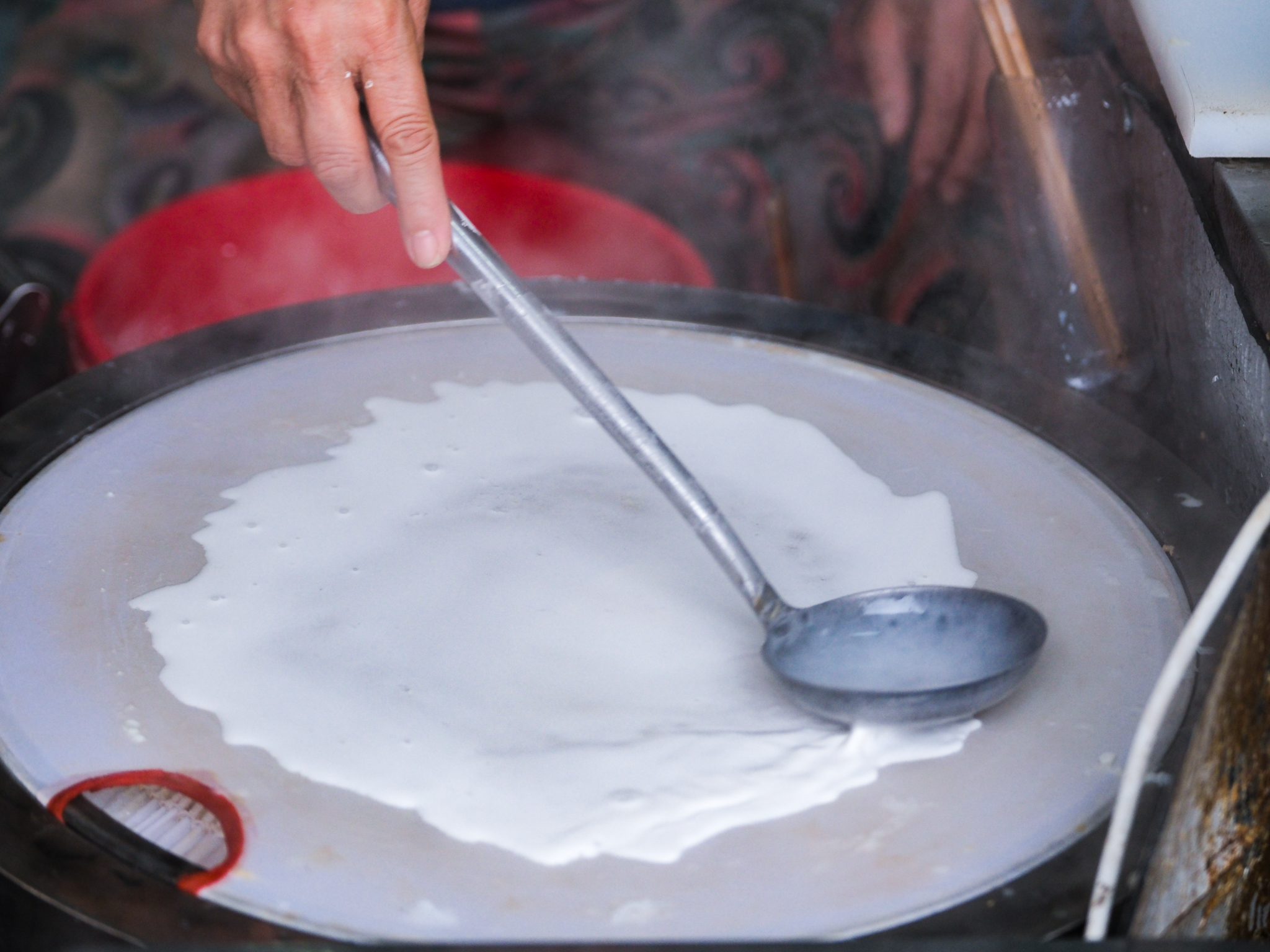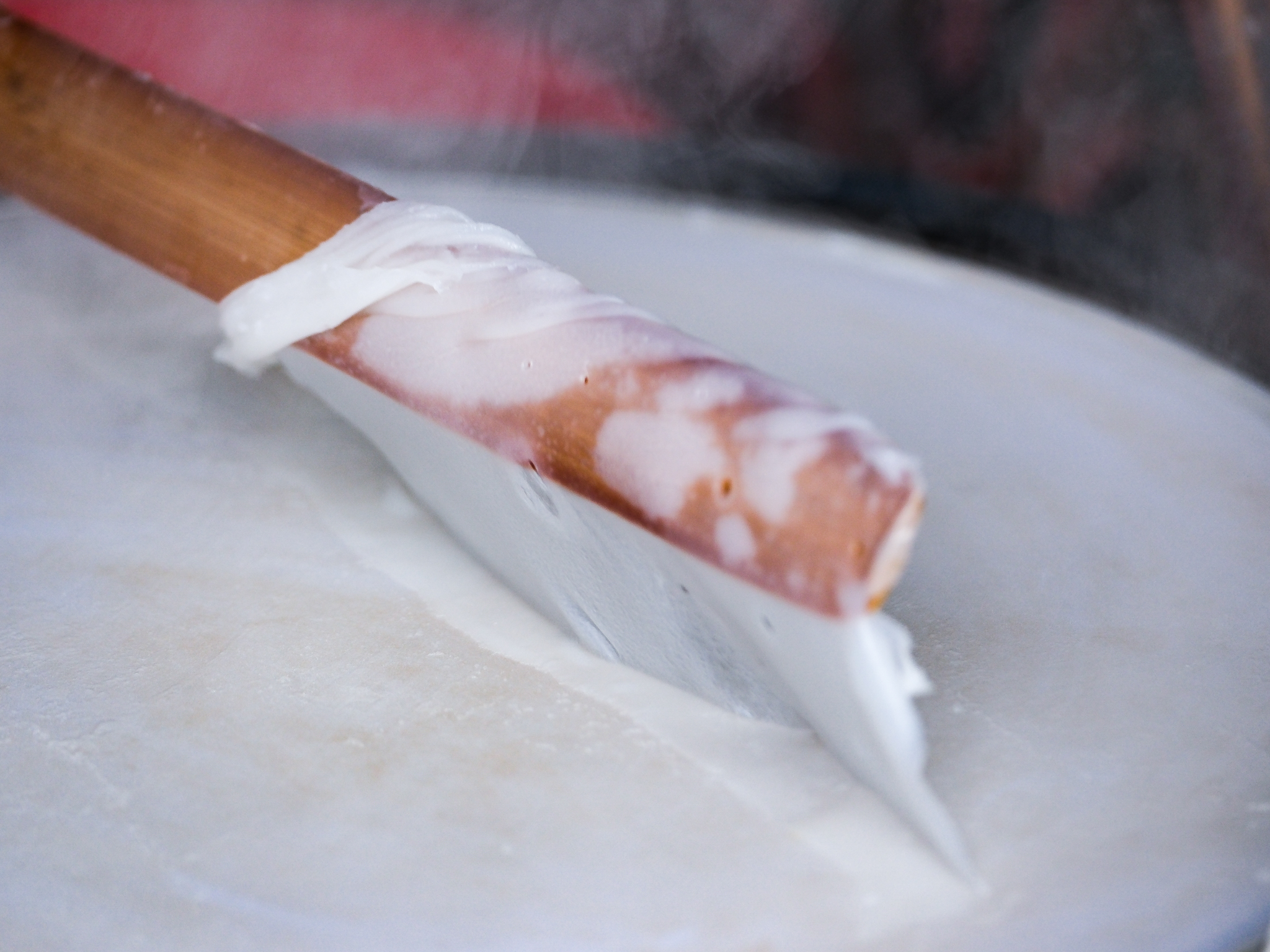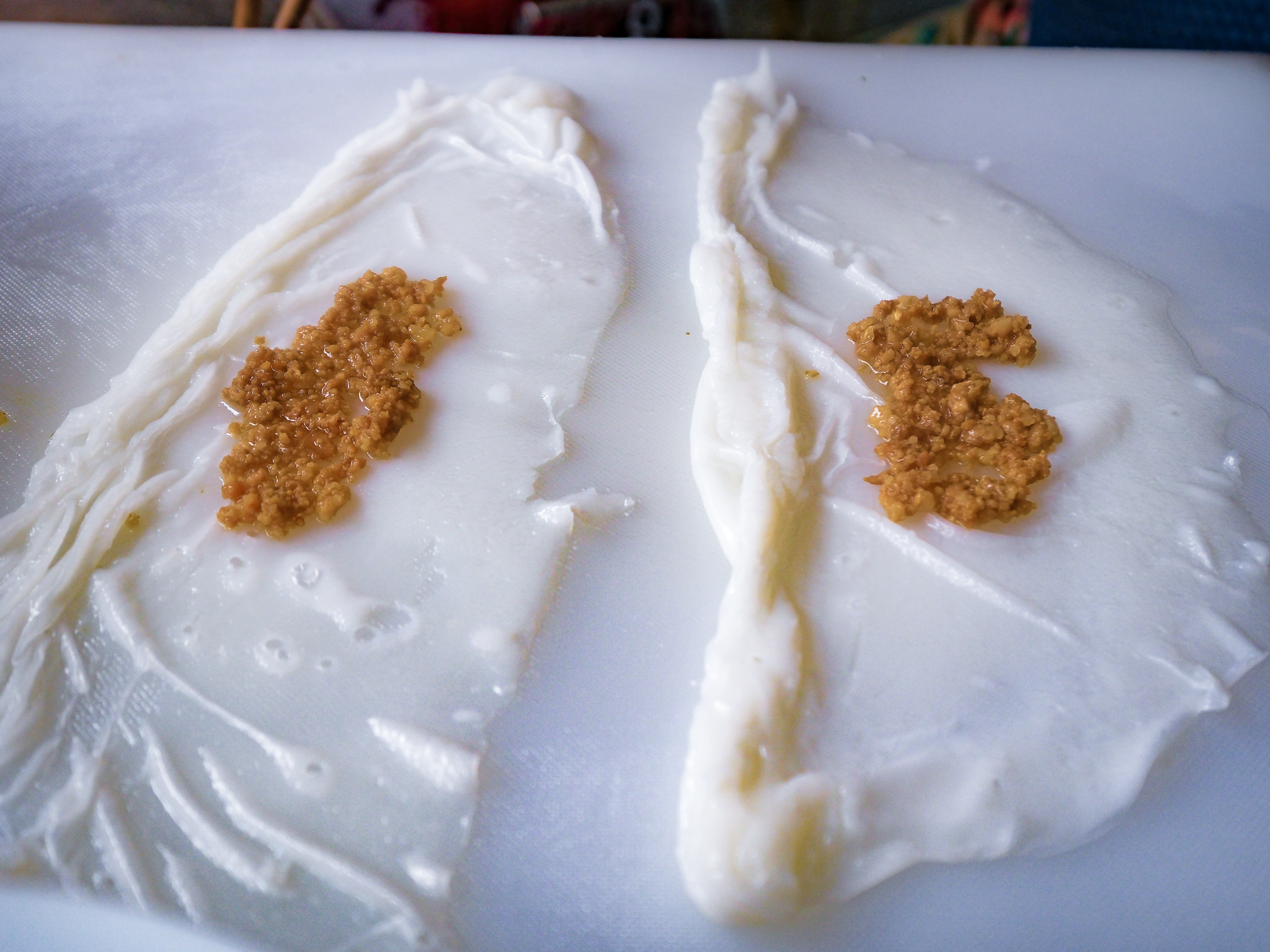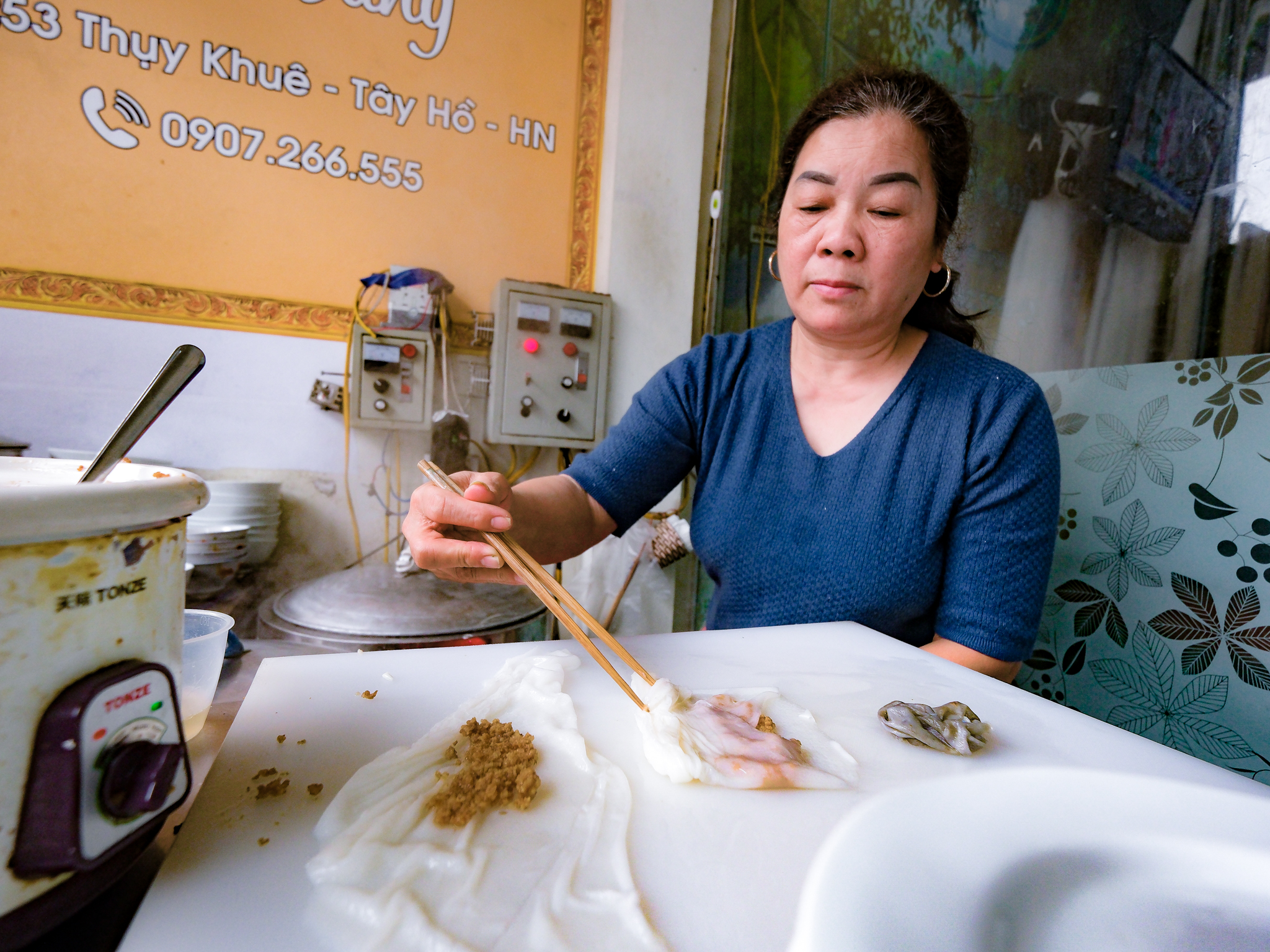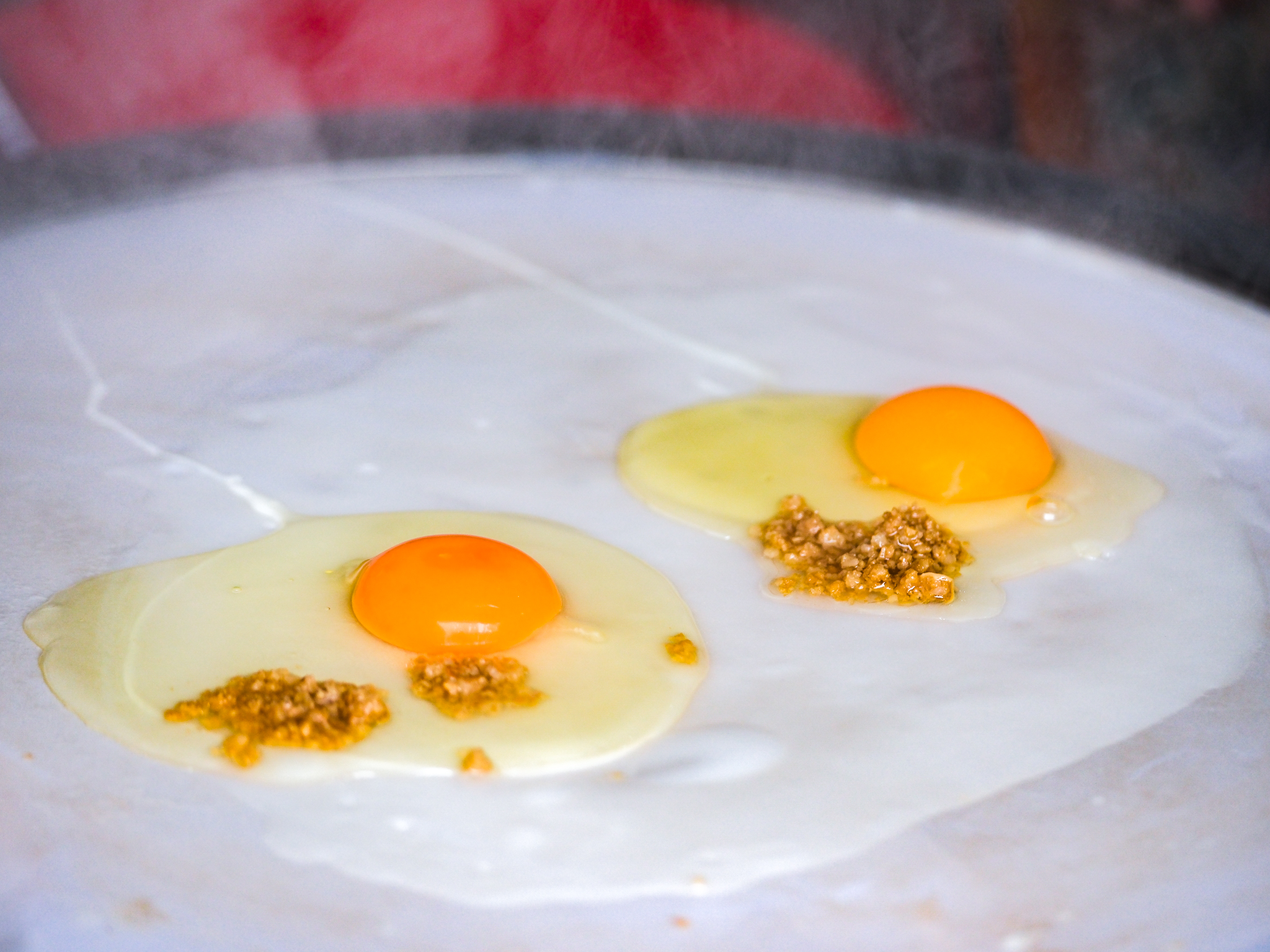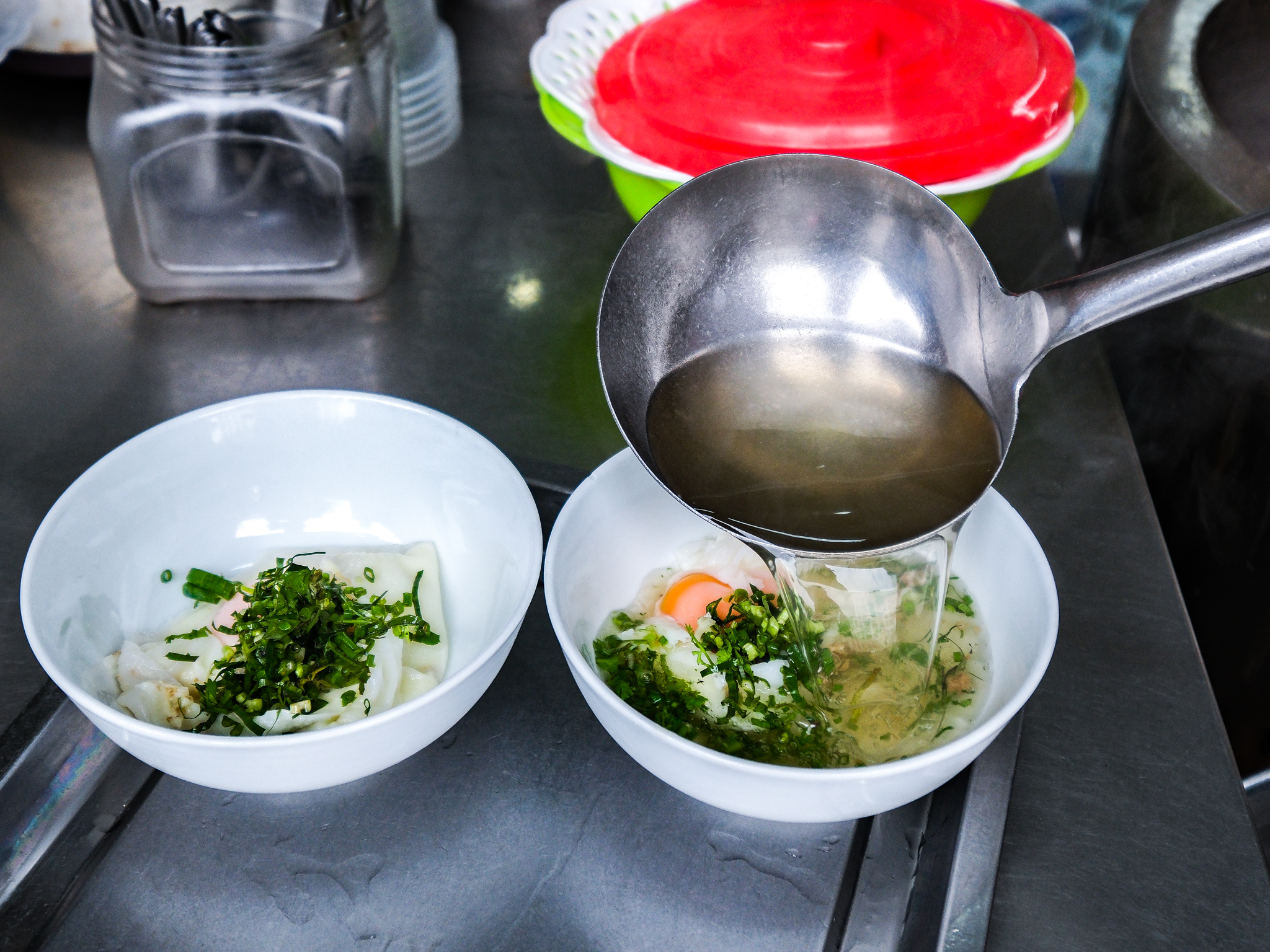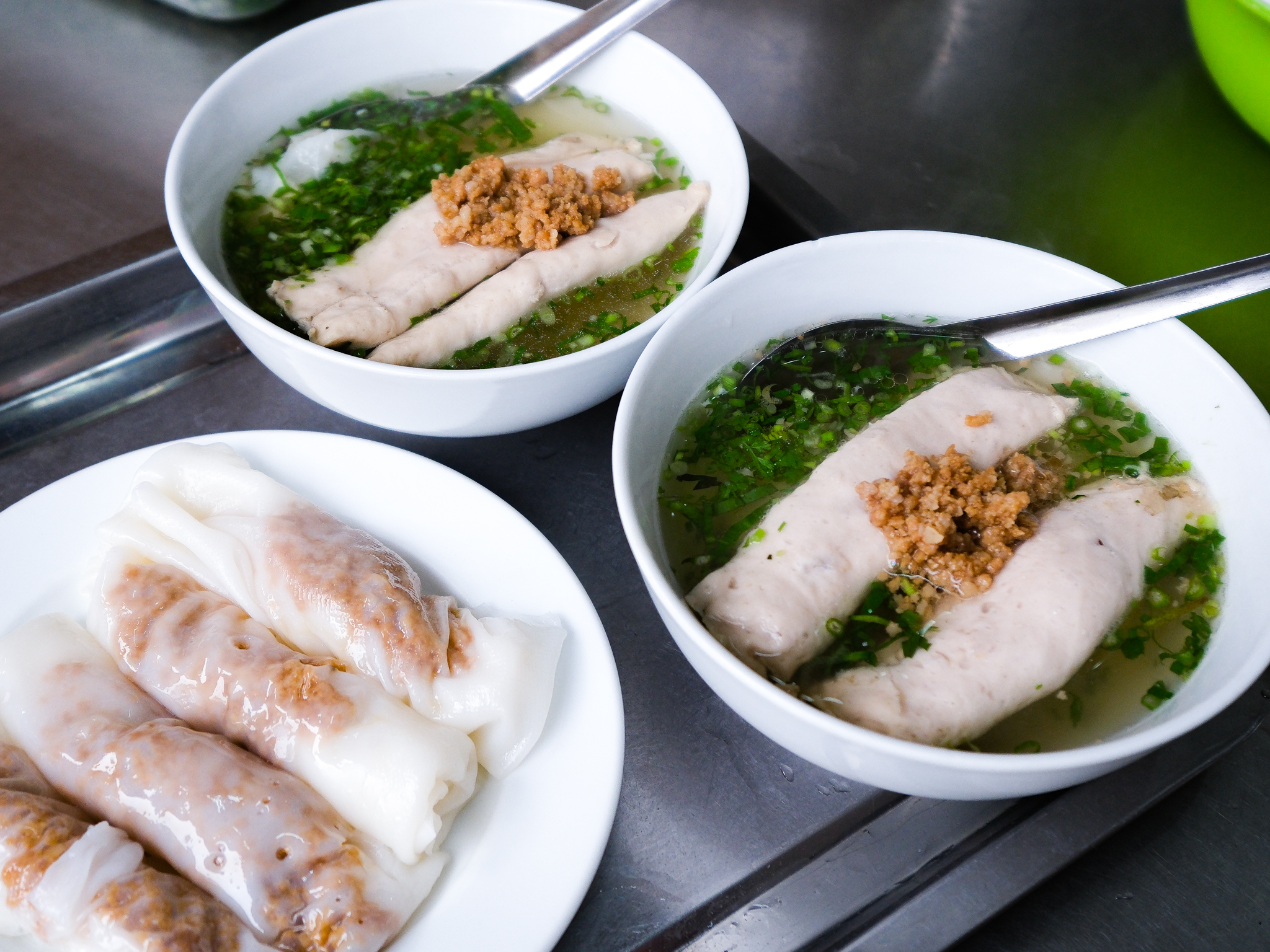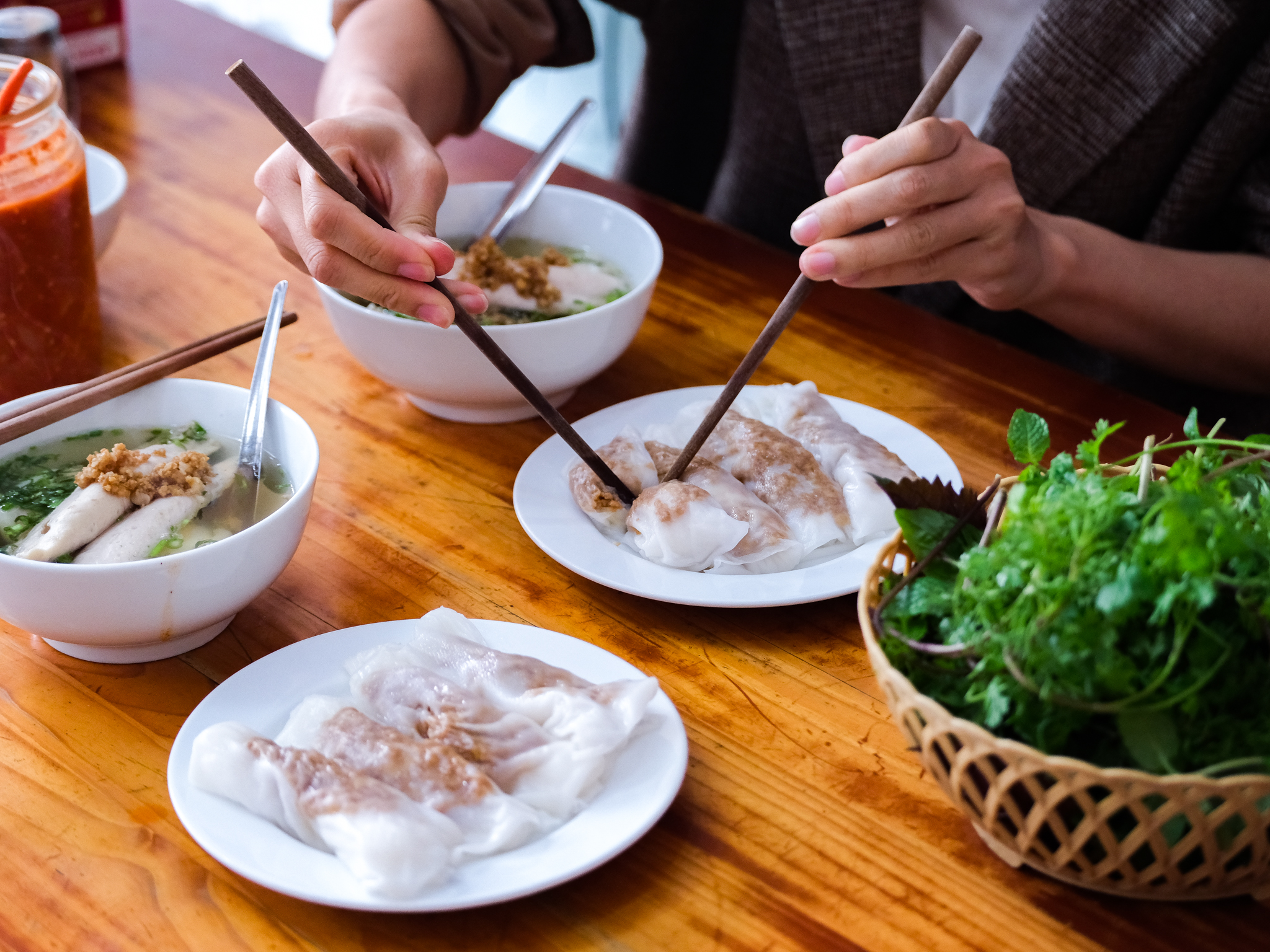A stall in Tay Ho District, Hanoi is pulling in swarms of diners with its Cao Bang-style banh cuon (steamed rice rolls).
Banh cuon, a popular dish found from across Vietnam, is a roll made by filling a steamed rice crepe wrap with minced pork, wood ears, and jicama.
In most of the country, it is served with a dipping sauce and sweet and sour fish sauce.
In northern Cao Bang Province, however, it is accompanied by a bowl of hot broth.
|
|
| Rolls of 'banh cuon' are served with bowls of hot broth at Banh Cuon Cao Bang stall in Hanoi, Vietnam. Photo: Nam Tran / Tuoi Tre News |
Aside from the broth, Cao Bang-style banh cuon is typically served with a side of bamboo shoots pickled with chili and mac mat (clausena indica) fruits.
Though the dish was once reserved for special occasions, it has now become a popular local delicacy.
Dinh Thi Tam, the owner of Banh Cuon Cao Bang stall at 253 Thuy Khe Street in Tay Ho District, is one of the many credited with introducing Cao Bang-style banh cuon to the rest of Vietnam.
In the eight years since she opened her stall, she has garnered a following of dedicated foodies who appreciate her open kitchen and expertise at rolling the rice crepes.
|
|
| Dinh Thi Tam makes 'banh cuon' (steamed rice rolls) at her Banh Cuon Cao Bang stall in Hanoi, Vietnam. Photo: Nam Tran / Tuoi Tre News |
Tam’s banh cuon is made by pouring the rice batter on a steaming cloth which is placed on top of a steamer.
The batter is then spread evenly on the surface as it cooks.
|
|
| Dinh Thi Tam spreads rice batter on top of a steamer to make 'banh cuon' at her Banh Cuon Cao Bang stall in Hanoi, Vietnam. Photo: Nam Tran / Tuoi Tre News |
Afterward, the crepe is taken off the steamer and wrapped around the fillings.
“We have to be fast and skillful in making the crepe, otherwise it will be overcooked,” Tam said.
“A banh cuon crepe should be cooked in the same amount of time it takes to wrap two rolls.”
|
|
| A rice crepe after being cooked. Photo: Nam Tran / Tuoi Tre News |
|
|
| Minced pork is put on rice crepes to make rolls of 'banh cuon' at Banh Cuon Cao Bang stall in Hanoi, Vietnam. Photo: Nam Tran / Tuoi Tre News |
|
|
| Dinh Thi Tam uses a pair of chopsticks to wrap the 'banh cuon.' Photo: Nam Tran / Tuoi Tre |
Tam also adds medium-boiled eggs to her banh cuon to increase the complexity of their flavor.
|
|
| Eggs and minced pork are put on rice crepes to make rolls of 'banh cuon' at Banh Cuon Cao Bang stall in Hanoi, Vietnam. Photo: Nam Tran / Tuoi Tre News |
She usually prepares the broth at night by boiling 10-12 kilograms of pork bone.
|
|
| Broth is made to serve with 'banh cuon' at Banh Cuon Cao Bang stall in Hanoi, Vietnam. Photo: Nam Tran / Tuoi Tre News |
To make her crepe batter, she soaks rice for three hours in the summer and four hours in the winter before blending it until it boasts a smooth, creamy texture.
All of her rice is bought directly from Cao Bang.
“I use Doan Ket rice, a variety that can only be grown in Cao Bang,” Tam said.
“We used to change to a different variety because it was cheaper, but it wasn’t good enough.”
|
|
| Portions of 'banh cuon' are ready to serve. Photo: Nam Tran / Tuoi Tre |
|
|
| Portions of 'banh cuon' are ready to serve at Banh Cuon Cao Bang stall in Hanoi, Vietnam. Photo: Nam Tran / Tuoi Tre News |
Tam’s banh cuon only has minced pork as its filling.
When she opened her stall, some diners asked her to include fish sauce and wood ears, but Tam chose to stick closely to her Cao Bang roots.
|
|
| A diner uses chopsticks to cut a roll of 'banh cuon.' Photo: Nam Tran / Tuoi Tre |
Her stall opens from 5:00 am to 10:00 pm every day.
A typical set of banh cuon at her stall fetches between VND40,000 (US$1.68) and VND50,000 ($2.1).
Like us on Facebook or follow us on Twitter to get the latest news about Vietnam!



